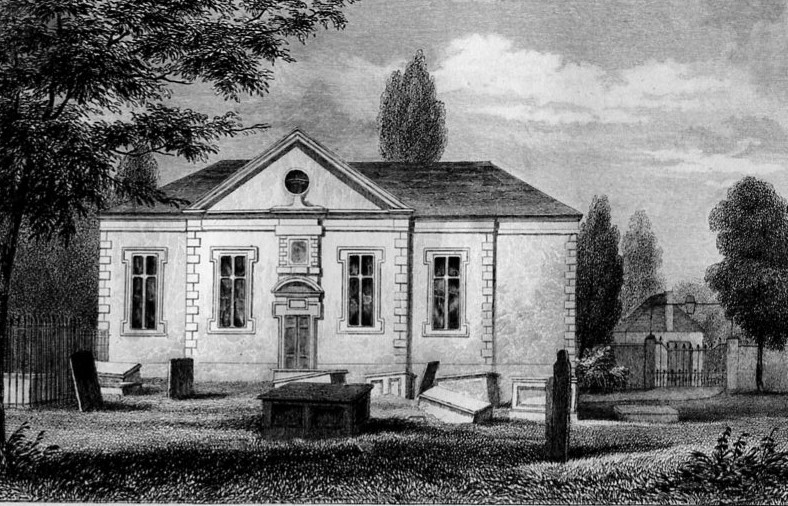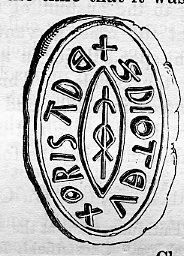
Welcome to the second part of our Chronology of Chesterfield’s History. You’ll find our other chronology pages accessible via the links below.
This section was last revised in March 2023 – but we are working on a completely new revision, hopefully to be published in the future.
Click on the links below to take you to our other chronology sections
- To the introduction
- 1 – Early History to 1599 (This section has been thoroughly revised and was first published in July 2023).
- 3 – 1800 to 1899 (This section was last revised in March 2023. We are are working on a completely new revision to be published in the future)
- 4 – 1900 to 1999 (This section was last revised in March 2023. We are are working on a completely new revision to be published in the future)
- 5 – 2000 onwards. (This section is not substantially populated. At some stage in the future we hope to add more recent events from the year 2000 onwards, but we do not currently have work in progress on this).
- Sources used in compiling our chronology are listed in the introduction.
Sources used in compiling our chronology are listed in the introduction

Chronology of Chesterfield’s history 2: 1600 – 1699
1600 The Rev. Cuthbert Hutchinson inducted to the living of Chesterfield.
1603 (January 3) John, son of Peter Boler, baptized at Tapton bridge.
CHARLES I
At July 21 1618, in the church register, the following memorandum occurs. ‘This day and year the Quarter Sessions of the Peace for the High Peak and Scarsdale was kept at Chesterfield, by virtue of his Majesty’s Commission and writ out of Kings Bench to the Sheriff for that purpose, and a Jury was then sworn and impannelled, but delivered no verdict for want of some presentments brought unto them. There was upon the bench then the Lord Darcy, Sir Francis Leeke, Bart., Sir William Kniveton, Knt. and Bart., Sir Peter Fletchervile, Sir John Rodes, and Sir Roger Manners, Knights, George Blount, Esq. before whom divers alehouse keepers entered into recognizances for brewing according to the statute, which was the chiefest state of their business.’
1628 Title of Earl of Chesterfield given to the Stanhope family. They have who have little or no connection with the town.
1631 (July 21) Charles I. confirmed the charters of preceding monarchs, and granted four fairs to Chesterfield: February 28, May 4, for two days, July 4, and September 14, for eight days.
1632 (November 11,) Star Chamber decree, in the cause of Leech, Knt. versus Foljambe, Bart., and Waddington, Vicar.
1632 Brampton and Wingerworth chapelries of Chesterfield.
1632 The inhabitants of Brampton and Whittington bound to make certain offerings to the church at Chesterfield, and to contribute their portion of sacramental bread.
1632 The inhabitants of Wingerworth subject only to a nominal dependence upon the church at Chesterfield, and their attendance there voluntary.
1634 Chesterfield ordered to provide £50l, as its portion of ship-money.
1637 (March 15 and 16) Assizes held at Chesterfield; and five men, and one woman executed, at Tapton bridge. This is the bridge over the river Rother on Brimington Road.
1638 The Rev. William Edwards inducted to the living of Chesterfield.
1642 (October 17) Sir John Gell marched into Chesterfield with his regiment, and raised 240 men by beat of drum.
1643 (May and December) The Earl of Newcastle’s forces came to Chesterfield.
1643 General Sir Thomas Fairfax, marched from Derby to Chesterfield, with four or five hundred men.
COMMONWEALTH
1653 The Rev. John Billingsley inducted to the living of Chesterfield.
CHARLES II
1661 Meetings of the Society of Friends held in Chesterfield.
1662 (August 24) The Rev. John Billingsley ejected from the living of Chesterfield, by the passing of the Bartholomew Act.
1664 The Rev. John Coope inducted to the living of Chesterfield.
1666-7 Brass money coined in Chesterfield.
1678 Taylor’s Alms’ Houses erected [on Saltergate]
1683 The Rev. John Lobley inducted to the living of Chesterfield.
JAMES II
1688 The so-called ‘Glorious Revolution’.
WILLIAM III
1694 Dissenting Chapel in Elder Yard erected.

1695 The Rev. William Blakeman inducted to the living of Chesterfield.
1698 Sir Charles Skrymsher, of Chesterfield, knight, High Sheriff of the county of Derby.
ANNE
1703 The Rev. Henry Audsley inducted to the living of Chesterfield.
1703 Large’s Alms Houses erected.
1704 Dr. Samuel Pegge, antiquary, born at Chesterfield.
1705 The Rev. John Peck inducted to the living of Chesterfield.
1707 Thomas Seeker, afterwards Archbishop of Canterbury, a pupil at the Grammar School of Chesterfield, under Mr. Robert Browne.
“In the Review of the Life and Character of Archbishop Seeker, prefixed to his Sermons, it is said, that ‘he received his education at several private schools and academies in the country.’ One of those places was at Chesterfield, in Derbyshire, (where he had a sister married to Richard Milnes), under Mr. Robert Browne, a good grammarian and schoolmaster there. Mr. Browne used to tap his head sometimes and say ‘Tom, if thou wouldst but be one of us, (meaning a Conformist,) thou wouldst be a Bishop.’
1707 The Rev. William Higgs inducted to the living of Chesterfield.
1710 Free Grammar School rebuilt [situated on Sheffield Road].
GEORGE I
1715 The Rev. Thomas Hincksman inducted to the living of Chesterfield.
1715 Salt works established in Chesterfield; rock salt brought from Northwich. These works soon abandoned as unprofitable.
1718 Chancel of the church enlarged, and newly seated.
1722 John Bright, of Chesterfield, Esq., High Sheriff of the county of Derby.
GEORGE II
1733 Two flagons presented to the church of Chesterfield; one by Mr. Thomas Dowker, of Gainsborough, merchant, and the other by his sister Mrs. Margaret Wilson, of London. Inscription on Mr. Dowker’s Flagon. To the Glory of God, and for the use of the Church of Chesterfield, the gift of Mr. Thomas Dowker, of Gainsborough, East-land Merchant, and Son of Mr. Thomas Dowker, Alderman of Chesterfield. Given A. D. 1733. Inscription on Mrs. Wilson’s Flagon. To the glory of God, and for the use of the Church of Chesterfield, the gift of Mrs. Margaret Wilson, of London, Widow, Sister of Mr. Thomas Dowker, who gave the other Flagon, Given A.D.1733.
1733 Bishop Halifax born at Chesterfield.
1738 The north galley in the parish church erected to match that already installed as the south gallery. [By 1856 galleries existed on four sides of the nave].
1739 The Rev. William Wheeler inducted to the living of Chesterfield.
1750 January, April and November fairs established.
1751 Rose’s Alms’ Houses erected.
1756 (October 21) Snetzler organ opened at the church at a cost of £500. [The organ was seriously damaged in the fire of 1961].
1760 Brass chandeliers in the church given by Godfrey Heathcote, Esq. [These still survive].
GEORGE III
1764 Mrs. Radcliffe, the celebrated novelist, whose maiden name was Ward, said to have been born at Chesterfield.
1765 The Rev. John Wood inducted to the living of Chesterfield.
1769 North part of the cross aisle of Chesterfield parish church rebuilt (the north transept).
1770 Quakers’ Meeting-house erected. Demolished in the early 1970s, this was situated on the site of the present Saltergate multi-storey car park.
1770 Act obtained for making a canal from the town of Chesterfield to the River Trent.
1774 Bells of the church hung anew, and sixth bell recast.
1774 West part of the roof of the church taken down, newly timbered, and fresh leaded.
1777 A writer in the Gentleman’s Magazine described Chesterfield as ‘a large town with nothing worthy of notice but the church, and that only for its ugliness; it is old and built of bad stone, but rendered most disgusting by its wooden spire (covered with lead) being so much warped that I discerned its crookedness at three miles distance’.
1776 (August 17) The Rev. John Wesley visited Chesterfield for the first time.
1777 A Roman pig of lead, bearing the inscription, “Imp. Gees. Hadrian! Aug. Met. Lut.,” found on Cromford Nether Moor.
1777 (June 4) Canal completed, and first vessel brought to the town of Chesterfield.
1778 Independent (Congregational) Chapel, known as the Blue Meeting House, erected in Froggatts Yard.
1778-9 Not one day’s rain or snow from the day of St. Thomas, (December 21 1778,) to that of St. Mark (April 25) 1779.
1779 (March 25) Cherry, plum and pear trees in full blossom.
1781 The Rev. George Bossley inducted to the living of Chesterfield.
1783 Another Roman pig of lead found near Matlock, bearing the inscription,” L. Aruconi Verecund. Metal. Lutud.”
1787 A third Roman pig of lead found on Matlock Moor, bearing the inscription, “Ti. Cl. Tr. Lut. Br. Ex. Arg.” [This and the earlier finds were thought to relate to a place called Lutudarum (itself supposed to be Chesterfield) but this has not been proved].
1787 South side of the church-yard enlarged.
1787-8 Present Town Hall built, at the expense of the Duke of Portland, by Mr. Carr of York. [Now demolished – the HSBC bank stands it its place – although there are some fragments on Glumangate. It acted as the borough gaol for debtors. Summer quarter sessions and petty sessions were held in it.]
1788 (November 5) Centenary of the Revolution commemorated on a very large scale at Chesterfield: tables erected which almost covered the market-place: a procession which extended nearly half way to Whittington: an old man, named Crich, who was born before the Revolution, carried through the streets on a chair.
1788 Chancel of the parish church further enlarged with the seating also altered.
1788 (December) Chesterfield contained 815 houses, and 3626 inhabitants.
1790 According to Ford’s history ‘The body of the parish church and chancel whitewashed, the pillars in the body of the church painted for the first time, by assessment, (as is expressly stated in the register,) and the cross aisle and chancel newly painted for the first time by subscription of the inhabitants of the town. The new sun-dial painted in the same year. Mr. Joseph Bower and Mr. Anthony Johnson Churchwardens Rev. Mr. Bossley, Vicar. Jethro Turner, Parish-Clerk.’.
1790 (December 23) Chesterfield visited by a terrible storm, which was felt also in London.
1790-1 The most severe winter that could ever be remembered by any person then living, for storms of wind, hail, rain, thunder and lightning.
1791 (June 12 Whitsunday,) A heavy fall of snow early in the morning.
1791 (November) Town Library established.
1792 Manor of Chesterfield transferred by the Duke of Portland to the Duke of Devonshire, in exchange for estates in Nottinghamshire
1792 Workhouse let by the corporation to the overseers of the poor on a lease of 99 years.
1792 (October 23) Michael Solomon, (called Mahone,) died.
1794 (July) A troop of cavalry raised by subscription at Chesterfield.
1795 New altar-piece in the church completed.
1795 Grain of all kinds so scarce, in the summer that it could with difficulty be obtained at any price. In the beginning of August wheat sold at a guinea a strike, and oats at 2l. 4s. per quarter.
1795 Methodist Chapel erected [Saltergate – rebuilt in 1869-70].
1796-7 (November, December, January) Constant high winds, which did great injury to trees and buildings.
1797 Midsummer sessions removed from Bakewell to Chesterfield, and Michaelmas sessions from Chesterfield to Derby.
1797 Wheat sold at seventeen shillings the load: three strikes to the load.
1799 (March) Ancient seal found at the Broad Oaks.

1799 From the month of July to August 11 so wet, that corn and grain of every kind were as backward as ever was known.
Click here to access the next part of our chronology.

